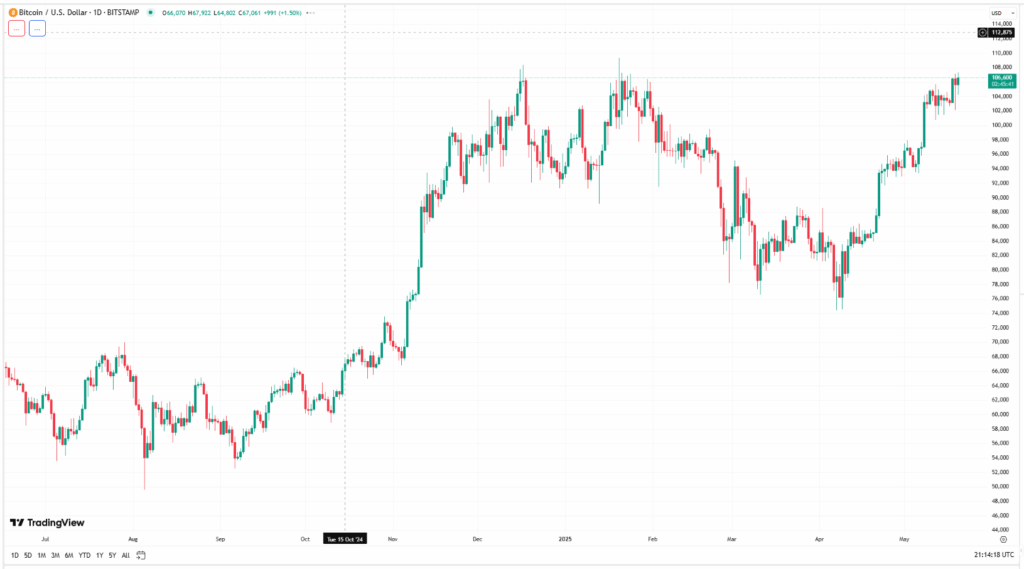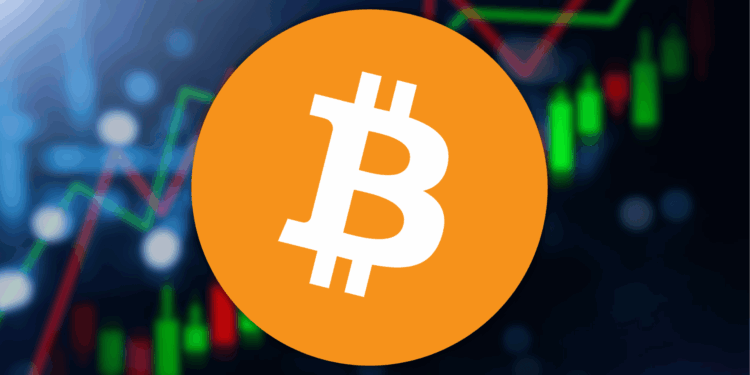- MicroStrategy made its biggest Bitcoin buy ever in May, grabbing 7,390 BTC for $764.9M, even while facing a lawsuit.
- BlackRock and Fidelity added over $494M in BTC via ETFs on the same day, signaling deep institutional confidence.
- With ETFs surging, whales hoarding, and miners accumulating, big players clearly expect Bitcoin to keep climbing.
In mid-May 2025, Michael Saylor’s MicroStrategy doubled down on Bitcoin—hard. The firm disclosed a $764.9 million buy, adding 7,390 BTC at an average price of $103,500. This wasn’t just another purchase; it was the largest single buy in the company’s history, bringing their total holdings to over 576,000 BTC ($59 billion). The move came despite an active lawsuit over the firm’s Bitcoin strategy, showing Saylor’s conviction hasn’t wavered. The purchase was funded through capital raises, including stock sales and preferred shares. The timing? Bitcoin had been holding above $100K for two weeks—MicroStrategy likely sees more upside.
BlackRock Adds $306M via ETF Inflows
The world’s largest asset manager didn’t stay quiet either. On May 19, BlackRock’s iShares Bitcoin Trust (IBIT) brought in $306 million in inflows—the highest of any ETF that day. That equated to roughly 2,900 BTC purchased through the ETF, pushing IBIT’s assets to nearly $67 billion. Since launch in 2024, the fund has become a monster, consistently pulling in over $100M per day in recent weeks. BlackRock hasn’t issued press releases—ETF creations are automatic—but the inflow volume speaks for itself. Their clients (pensions, hedge funds, and allocators) are clearly increasing their exposure.
Fidelity Quietly Joins In
Fidelity’s Wise Origin Bitcoin Trust (FBTC) also saw a $188 million bump on the same day. That’s another 1,800+ BTC added, making it the second-largest U.S. Bitcoin ETF after BlackRock’s. This wasn’t a one-off—ARK Invest also added $155M that day. These flows weren’t retail FOMO; they were methodical and institution-driven. The fact that Fidelity added so aggressively at six-figure BTC levels says a lot: big money believes this cycle isn’t done.
So, Why Now?
A few things are converging. First, ETF flows are hitting records. May 19 saw $667 million across all U.S. spot BTC ETFs—showing broad institutional interest. At the same time, on-chain data shows whales pulling Bitcoin off exchanges. Glassnode’s accumulation scores are maxed out, and exchange reserves have dropped 8% since April. This behavior historically precedes price surges.
Even Bitcoin miners have flipped. For the first time since 2023, miners are accumulating rather than selling. Over 2,700 BTC were added to miner wallets from mid-April to mid-May. Given rising production costs ($82K–$137K per BTC), it’s a sign they expect much higher prices.
Meanwhile, the macro backdrop is helping. The Fed held rates at 4.25–4.50% and flagged renewed inflation risks. Bitcoin—as a fixed-supply asset—is benefiting from that narrative. And with the FDIC and Fed softening crypto guidance for banks in April, institutions are more comfortable going in big.
Final Thought: A Familiar Pattern
We’ve seen this before. Institutional accumulation tends to signal the mid-phase of a bull market. That was the case in 2020–2021, and again now in 2024–2025 with spot ETFs. The difference? The scale is far larger this time. ETFs are locking up BTC. Whales are hoarding. Miners aren’t selling. And institutions aren’t waiting for the blow-off top—they’re buying before it.

If history is any guide, that kind of conviction isn’t just noise. It’s fuel.














